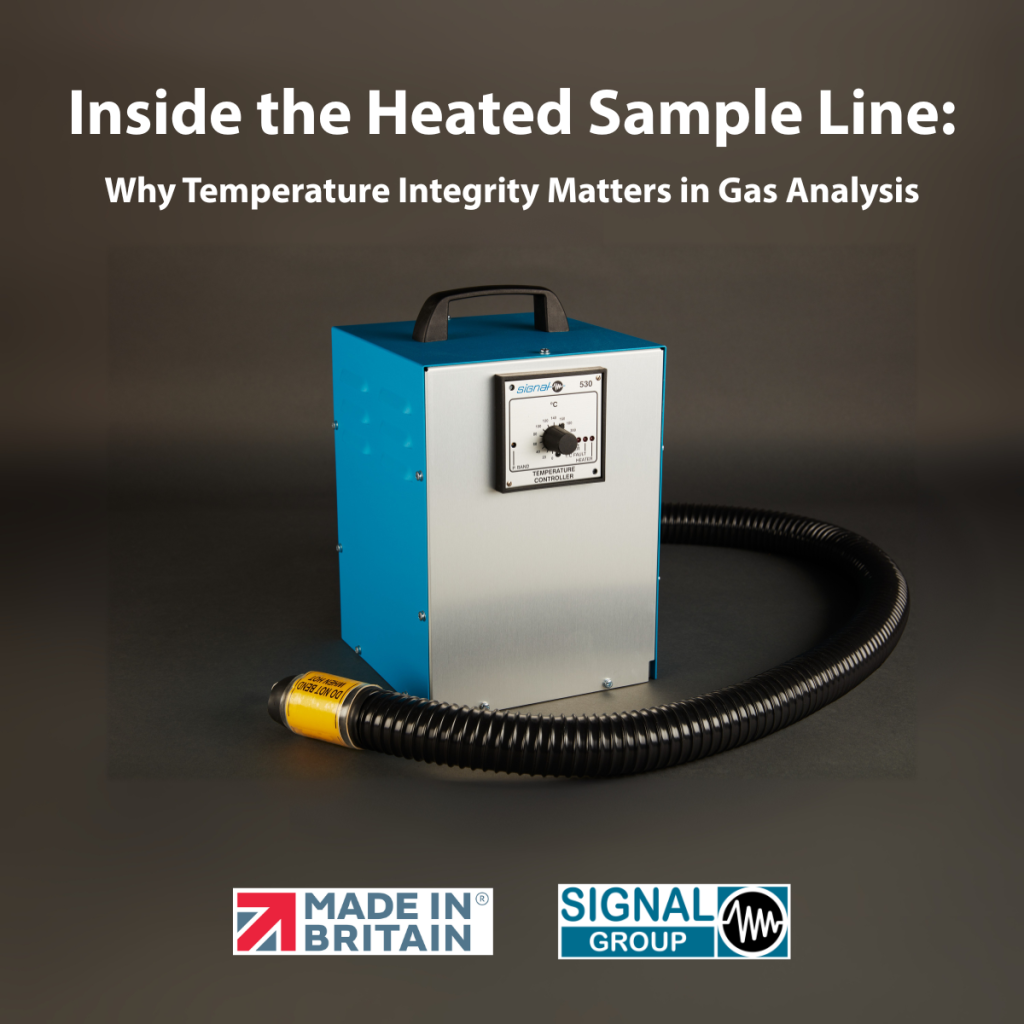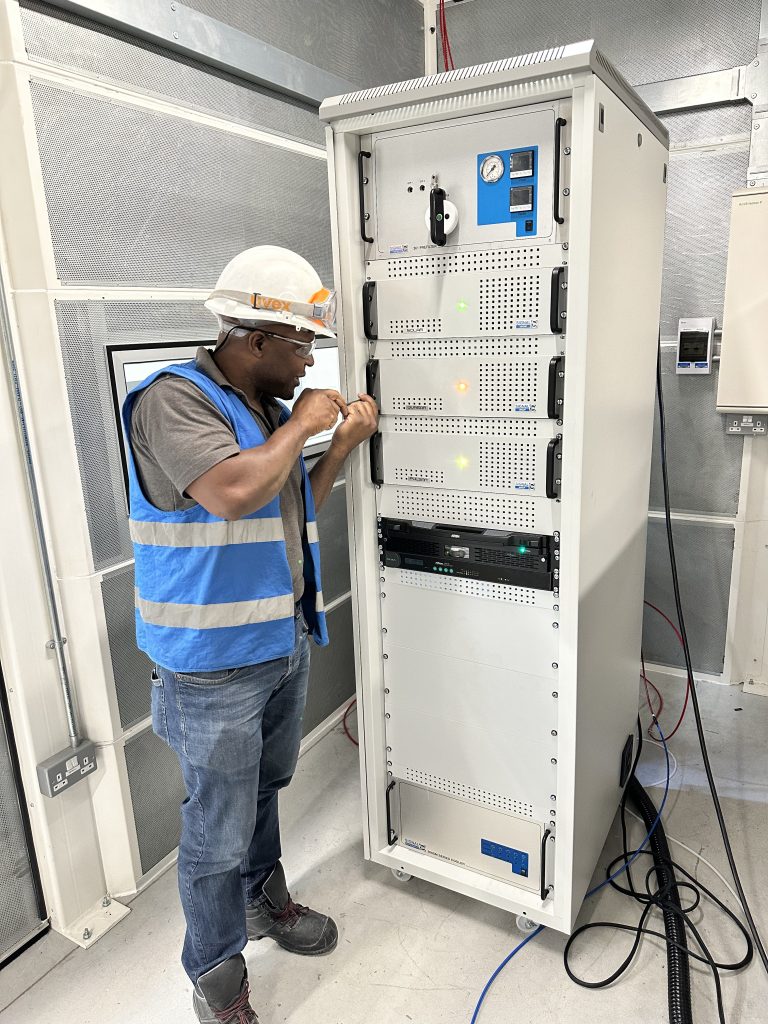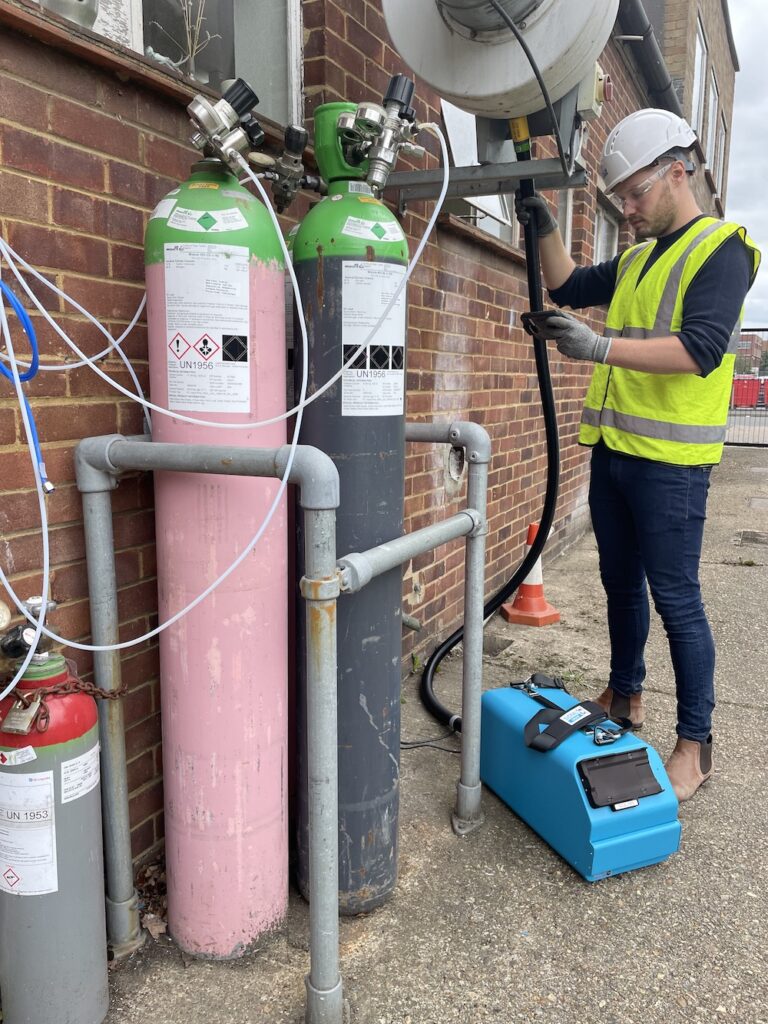Why Certification Matters in VOC Monitoring – MCERTS, EN14181 & EN15267 Explained

When monitoring volatile organic compounds (VOCs) and total hydrocarbons (THC) in regulated industries, accuracy isn’t optional — it’s a legal and operational necessity. Whether you’re managing a waste incinerator, a thermal oxidiser, or a medium combustion plant, your gas analysis system must meet strict performance and certification standards. At Signal Group, we’ve engineered the SOLAR CEMNEX to not only deliver world-class VOC measurement but to […]
Inside the Heated Sample Line: Why Temperature Integrity Matters in Gas Analysis

In the realm of precise gas analysis, particularly within continuous emissions monitoring systems (CEMS) and process control applications, the integrity of the sample from the point of extraction to the analyser is paramount. A critical, yet often underestimated, component in maintaining this integrity is the heated sample line. Failure to control the sample gas temperature […]
What Makes an Analyser “Reference Standard”?

Setting the Standard in Gas Analysis: Why Reference Methods Matter In the rigorous domains of emissions monitoring, industrial process control, and advanced atmospheric research, the precision and reliability of gas analysis instrumentation are not merely advantageous; they are foundational to regulatory compliance, environmental stewardship, and scientific advancement. The designation of a gas analyser as a […]
Why CEMS Matter — And How to Get It Right

Understanding the Role of Continuous Emissions Monitoring Systems (CEMS) In an increasingly regulated world, the ability to accurately monitor emissions in real time is no longer a luxury—it’s a necessity. Continuous Emissions Monitoring Systems (CEMS) provide the vital data industries need to: From power generation to cement production, from waste incineration to marine and automotive […]
Advancing Emissions Monitoring: The Critical Role of Gas Analysers in Carbon Capture Initiatives

In the modern era, emissions monitoring has become a critical environmental responsibility for industries worldwide. Gas analysers play a pivotal role in this context, offering the tools necessary to accurately measure the presence and concentrations of various gases in emissions. Their importance cannot be overstated, as they provide the data needed to comply with environmental […]
Monitoring VOC emissions to ensure US compliance

Global regulations limit the environmental emissions of volatile organic compounds (VOCs) from industrial processes. This is because VOCs contribute to the formation of ozone, a constituent of photochemical smog. Methane and some halogenated VOCs, such as refrigerants, are also powerful greenhouse gases, and thereby contribute to climate change. Also, in high concentrations, many VOCs are […]
Gas analysers – extractive or in-situ?

There are two main options for gas analysis in industrial processes or emissions; the analyser can be located inside the gas stream (in-situ), or a sample can be removed from the gas stream (extractive) and transferred to an external gas analyser. As a gas analyser developer and manufacturer with a history that dates back to […]
Researchers investigate ammonia fuel for marine decarbonisation

A group of academic and industrial partners have been awarded a £5.5million grant by the Engineering and Physical Sciences Research Council (EPSRC) to accelerate understanding, technologies and policies relating to the use of ammonia as a sustainable fuel. The project begins in June 2022 and will run for 5 years. Entitled ‘Decarbonised Clean Marine: Green […]
Did you know?

Our S4 units are capable of having all the flows, pressures and temperatures read and adjusted remotely via the internet. This together with the out of limit alarms may be messaged to Signal Group where the service department can check the readings and adjust the settings if necessary. All S4 gas analysers have digital signal […]
Rush to clean energy prompts demand for ammonia analysers

The global stampede to develop clean energy sources has prompted a demand for ammonia analysers from the developers of engines that will be capable of using ammonia as a fuel. In response, Signal Group has developed a new ammonia analyser, the S4 Nebula, which employs tunable diode laser spectrometry (TDLS). “Many of our customers already […]
